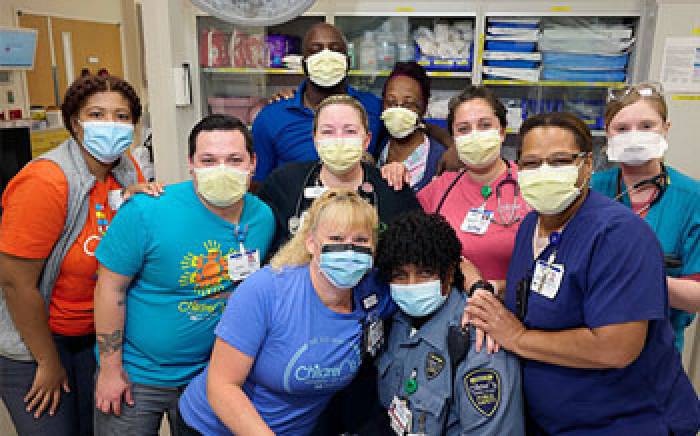Swim safety devices can help your kids enjoy the water with confidence.
Summer has arrived, and your little ones cannot wait to cool off in the lake or neighborhood pool. But while water is wonderful, it can also be dangerous if not approached with caution.
About 10 people die from drowning every day in the United States, according to the National Safety Council. And the younger the swimmer, the more likely he or she is to experience a drowning or near-drowning situation.
“Drowning is a leading cause of preventable pediatric death,” says Lindsay Clukies, MD, a Washington University pediatric emergency medicine physician at St. Louis Children’s Hospital. “And for every child who drowns, another five receive emergency care for nonfatal submersion injuries. Preventing these situations requires multiple layers of barriers.”
Because drowning can occur in as little as one inch of rain, never leave small children alone while near any type of water, including bathtubs, pools, wading pools or near any standing water. Even buckets can be dangerous.
Many parents may turn to swim safety devices to help protect their children when they are in the water. However, some swim safety devices look more helpful than they actually are. For example, items that are inflated with air can do more harm than good when your child is splashing around in the lake or pool.
“I do not recommend the use of any air-filled swimming aids, such as water wings, in place of life jackets because they can deflate and are not designed to keep swimmers safe,” Dr. Clukies says. “They do not ensure that a child’s head is always kept above water and can unfortunately give children and caregivers a false sense of security.”
Instead, Dr. Clukies recommends that children wear Coast Guard-approved life jackets whenever they are on boats or docks or near bodies of water. Life jackets should be:
- belted and strapped
- in good condition
- properly fitted and snug
Swimmers in Training
While life jackets are the only option to keep your child truly safe in the water, floaties, swim belts and water wings might also be used as your child learns to swim. If you choose to use these devices, an adult should always be present and actively supervising your child.
“Designate a responsible adult who is not distracted or under the influence of drugs or alcohol as the water guardian,” Dr. Clukies says. “Also, remember that because distractions can happen, keeping your child within your reach in and around any type of water is critical, especially with infants, toddlers and young children.”
It is also essential to have a fully enclosed fence around a pool. Make sure the fence has a self-latching, self-closing gate that toddlers and young children cannot open themselves.
To request information about water safety, call the St. Louis Children’s Hospital Center for Families Resource Library at 314.454.KIDS (5437).






